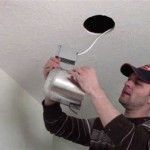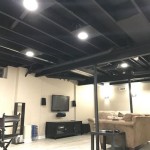Dive into the Essential Aspects of DIY Ceiling Lamp Fixtures
Transforming your living space with a touch of personal flair and illumination is easier than ever with DIY ceiling lamp fixtures. By incorporating these fixtures, you can elevate your home's ambiance and create a cozy and welcoming atmosphere. However, before embarking on this exciting project, it's crucial to understand the fundamental aspects involved.
1. Safety Considerations:
Safety is paramount when dealing with electrical components. Before you begin, ensure you have a basic understanding of electrical wiring and follow all safety protocols meticulously. Wear appropriate safety gear, including gloves and eye protection, and work in a well-ventilated area. If you feel uncertain about any aspect of the installation, don't hesitate to consult a qualified electrician.
2. Choosing the Right Fixture:
The type of ceiling lamp fixture you select will significantly impact the aesthetic and functional aspects of your space. Consider factors such as the size of the room, the height of the ceiling, and the overall style you aim to achieve. From chandeliers to pendants and flush mounts, a wide range of options is available to complement your décor.
3. Assembling the Fixture:
Once you have chosen the perfect fixture, it's time to assemble it. Follow the manufacturer's instructions carefully, ensuring that all components are securely attached and properly aligned. Double-check all connections to prevent any electrical hazards.
4. Installing the Fixture:
With the fixture assembled, it's time for the installation. Determine the desired location for your fixture and ensure there is adequate support. Turn off the power supply at the breaker panel and proceed with the installation according to the manufacturer's guidelines. Secure the fixture to the electrical box and connect the wires correctly. Don't forget to insulate all exposed wires and secure them firmly.
5. Bulb Selection:
The type of bulb you choose will influence the overall lighting effect. Consider factors such as brightness, color temperature, and energy efficiency. Experiment with different bulb options to find the perfect combination that complements your fixture and creates the desired ambiance.
6. Maintenance and Troubleshooting:
To ensure the longevity of your DIY ceiling lamp fixture, regular maintenance is essential. Periodically check the fixture for any loose connections, flickering bulbs, or other potential issues. Promptly address any problems to prevent electrical hazards and maintain optimal performance.
Conclusion:
Creating your own DIY ceiling lamp fixture can be a fulfilling and rewarding experience that adds a personal touch to your home. By understanding the essential aspects, including safety, fixture selection, installation, bulb choice, and maintenance, you can illuminate your living space with style and confidence. Remember to prioritize safety, follow instructions carefully, and enjoy the satisfaction of creating a unique and eye-catching lighting solution.

Lighting Diys I D Actually Pay Good Money For Plaster Disaster

Making A Ceiling Light With Diffuser From Lamp Shade Young House Love

This Viral Tiktok Shows How To Cover Flush Mounts With A Chandelier Diy

Diy Mason Jar Pendant Light Upcycle An Old Vanity Strip In Easy Steps

Diy Cover Up Ugly Light Fixtures In Al Housing Hawk Hill

34 Creative Diy Lighting Ideas That You Can Make At Home

Diy Beaded Chandelier Upcycled From An Old Light Refresh Living

Diy Ceiling Mount Drum Shade Light Fixture Tutorialdiy Show Off Decorating And Home Improvement Blog

34 Creative Diy Lighting Ideas That You Can Make At Home

24 Ceiling Lights For Under 100 I Diy
Related Posts








